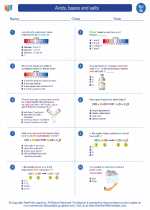Paleontology
Paleontology is the scientific study of the history of life on Earth through the examination of plant and animal fossils. It seeks to understand the evolution and interactions of life forms over geologic time scales. Paleontologists use a variety of scientific techniques to uncover and interpret the fossil record, providing valuable insights into the Earth's past and the origins of life.
Key Concepts in Paleontology
- Fossils: Fossils are the preserved remains or traces of ancient organisms. They can include bones, shells, footprints, and other evidence of past life. Fossils provide direct evidence of the types of organisms that lived in the past and how they have evolved over time.
- Evolution: The study of fossils helps paleontologists understand the process of evolution and how organisms have changed and diversified over millions of years.
- Stratigraphy: Paleontologists use the principles of stratigraphy to study the relative ages of fossils and the rock layers in which they are found. This helps in reconstructing the sequence of events in Earth's history.
- Paleobiology: This field focuses on understanding the biology of ancient organisms and their interactions with the environment. It involves studying the anatomy, behavior, and ecological roles of extinct species.
- Paleoecology: Paleoecology examines the relationships between ancient organisms and their environments, including factors such as climate, geography, and ecological interactions.
Methods and Tools in Paleontology
Paleontologists use a range of methods and tools to study fossils and reconstruct past environments:
- Fossil Excavation: This involves carefully removing fossils from their surrounding rock layers while recording important details such as the position and orientation of the specimens.
- Geological Mapping: Understanding the geological context of fossils is crucial, and paleontologists often work closely with geologists to map and interpret the rock formations where fossils are found.
- Laboratory Analysis: Fossils are often studied in laboratory settings using techniques such as microscopy, chemical analysis, and imaging to understand their structure, composition, and preservation.
- Computational Methods: Paleontologists use computer modeling and data analysis to reconstruct ancient environments, simulate evolutionary processes, and visualize fossil data.
Applications of Paleontology
Paleontology has broad applications beyond just understanding ancient life forms. Some of the key applications include:
- Understanding Climate Change: Fossil records provide valuable information about past climates and can help in predicting and understanding current and future climate changes.
- Biodiversity Conservation: Studying the history of life on Earth can provide insights into the factors that influence biodiversity and help inform conservation efforts.
- Resource Exploration: Paleontological studies of ancient ecosystems can inform the exploration and sustainable use of natural resources such as oil, coal, and minerals.
- Education and Outreach: Paleontology plays a crucial role in engaging the public and fostering interest in science through museum exhibits, educational programs, and public outreach activities.
Study Guide
If you are studying paleontology, here are some key topics and concepts to focus on:
- Definition and scope of paleontology
- Types of fossils and their significance
- Principles of evolution and their application in paleontology
- Stratigraphy and its importance in studying the fossil record
- Key methods and tools used in paleontological research
- Applications of paleontology in various fields
Remember to engage with real fossil specimens, visit natural history museums, and explore online resources to deepen your understanding of paleontology.
Good luck with your studies!
.






